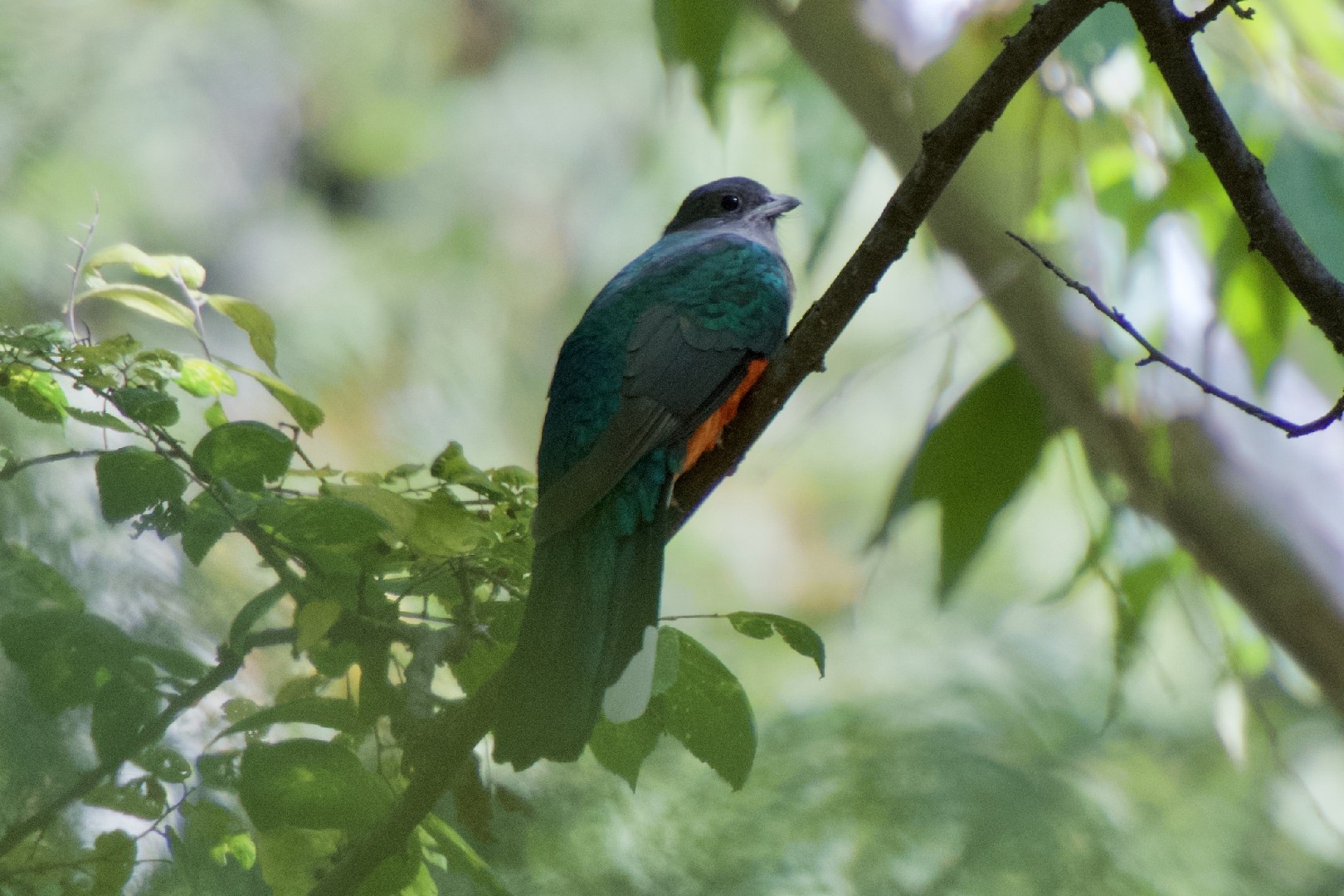Eared Quetzal
A species of Eared Quetzal Scientific name : Euptilotis neoxenus Genus : Eared Quetzal
Eared Quetzal, A species of Eared Quetzal
Botanical name: Euptilotis neoxenus
Genus: Eared Quetzal
Content
Description General Info
Description
Body length is 33–36 cm (13–14 in). Both sexes have iridescent green backs, iridescent dark blue central tail feathers, and outer tail feathers that are predominantly white terminally with a band of black at the base (sometimes partially barred black and white in females). The bill is dull gray with a slightly darker band at the tip. The adult male has a blackish head, iridescent green breast, and geranium red belly and undertail coverts. The adult female has a gray head, breast, and upper belly and less extensive (though equally bright) red on the lower belly. Both sexes bear the wispy hair-like auricular plumes that give the species its name, though these are rarely apparent in the field. Both head and bill appear rather small and narrow in comparison to those of typical trogons. The male's song (tremolo call) is a series of whistled notes increasing in volume. Calls include low-intensity squeals rising in pitch, a loud squeal ending with a sharp "chuck," and a strident cackle given mostly in flight. Quetzals differ from typical New World trogons in having iridescent wing coverts, less extensive fusion between the two forward-facing toes of their heterodactyl foot, broad tails with distinctly convex (rather than straight or concave) sides, and eggs with pale blue shells. They also average larger in body size than typical trogons, and the eggs and young develop more slowly. The eared quetzal is a seemingly primitive form, lacking the impressively long iridescent upper tail and wing coverts of members of the genus Pharomachrus (including the resplendent quetzal). 
Size
23 - 41 cm
Nest Placement
Cavity
Feeding Habits
Eared Quetzal primarily consumes insects and fruits, including caterpillars, larvae, katydids, moths, and various berries. It forages using specific hunting techniques, adapting to exploit available food resources distinctively.
Habitat
Eared Quetzal primarily resides in high-altitude forests ranging from 1800 to 3000 meters, within the Mexican highlands. Their preferred habitats are undisturbed, dense cork forests with steep slopes and stunted vegetation, but they also adapt to dry-open and mesa forests that include high plateaus with large pines. Eared Quetzal shows adaptability by occupying both pristine and secondary forests.
Nest Behavior
Nesting of eared Quetzal occurs mainly in late summer and early fall. Details on egg-laying and parental care are not well documented, but breeding behavior generally aligns with typical cavity-nesting species.
Nest Characteristics
Eared Quetzal nests in tree cavities, typically in old flicker holes in large dead or partly-dead trees, often located on canyon slopes. Nest cavities are found 25-70 feet above ground.
Dite type
Omnivorous
General Info
Feeding Habits
Bird food type
Distribution Area
It is a resident of the middle to upper levels of pine-oak woodlands and oak-conifer forests, frequently along streams. 
Scientific Classification
Phylum
Chordates Class
Birds Order
Trogons Family
Trogons and quetzals Genus
Eared Quetzal Species
Eared Quetzal 